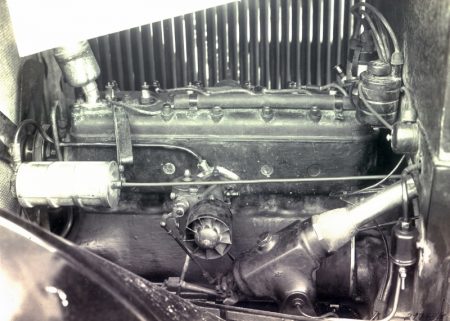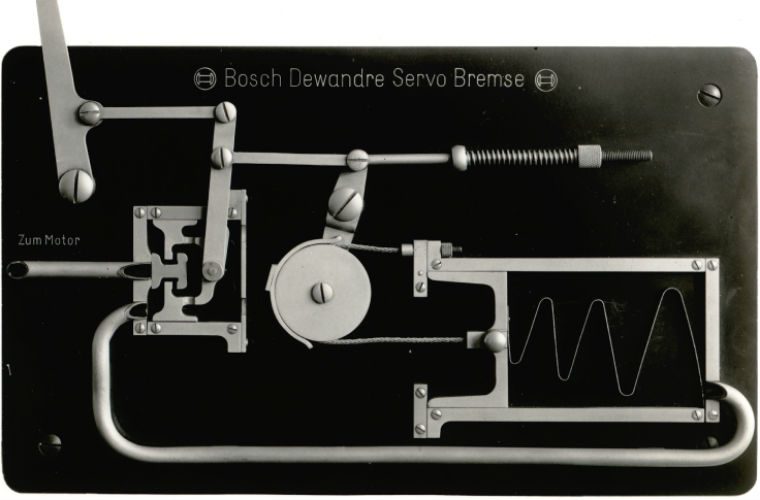“The dashing tempo of the modern automobile offers a particular thrill which nobody can resist and which no motorist willingly allows himself to be deprived of.”
These are the words with which Bosch’s head of advertising Fritz Seitz begins his essay on an interesting new braking development at Bosch in 1927.
The risk of high speed in these days was obvious: it had to be possible to reduce high speeds quickly, and it was precisely this necessity which was proving a problem to the automobile industry.
Bosch’s answer to this problem was the “Bosch-Dewandre servo brake”.
This device, patented by the Belgian engineer Albert Dewandre, made use of the vacuum created in the engine’s air intake system when the driver takes his foot off the accelerator.
‘Easy on leg muscles’
Using brake cylinders, the vacuum produced could be transferred to the brake drums when the foot brake was depressed, reducing the amount of pressure the driver had to apply to the pedal yet maintaining the same braking performance.
Since the early 1920s, passenger cars had been fitted with brakes on all four wheels, which reduced braking distances.
However, this braking power could only be achieved by extreme physical effort.

Bosch servo brake (silver tube, left) installed in a car, 1928.
It was not until servo brakes were introduced that the theoretically good braking power of the four-wheel brake could be exploited by a moderate application of force.
Servo braking made full use of the four-wheel brake while banishing the act of braking the element of physical hard work which could sometimes be dangerously deficient in critical situations.
In addition to extra comfort and safety, the servo brake offered economic advantages which Bosch emphasised even in the early product descriptions: a 1928 brochure already stressed that the rapid transportation of goods in connection with tough competition called for high speeds which, however, could only be justified if efficient braking was ensured.
The fact that the servo brake caused no additional operating costs – additional fuel consumption, for instance – made it an even more interesting option for the transport industry.
Invention to innovation
The design of Dewandre’s System was well thought out, but only became marketable thanks to Bosch.
Bosch repeatedly introduced innovations to the automobile industry which could only be realised in practice if manufactured in large numbers: the mere idea or its formulation in the shape of a patent was all too often far removed from its realisation.
This is where Bosch picked up the basic bright idea – in this case the servo brake – and developed it into a marketable product ready for mass production.
For further information about Bosch, follow the ‘more details’ link below.







